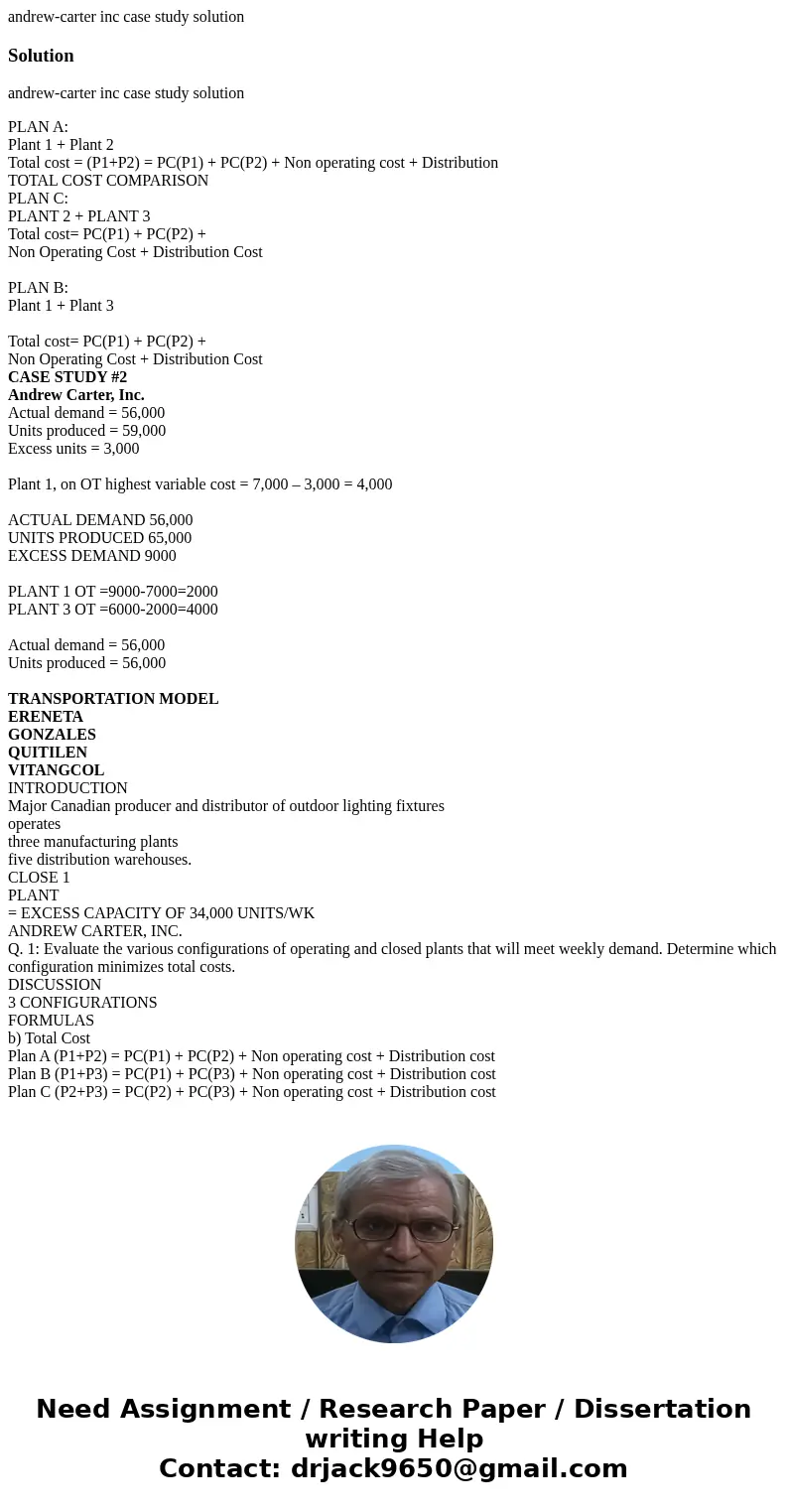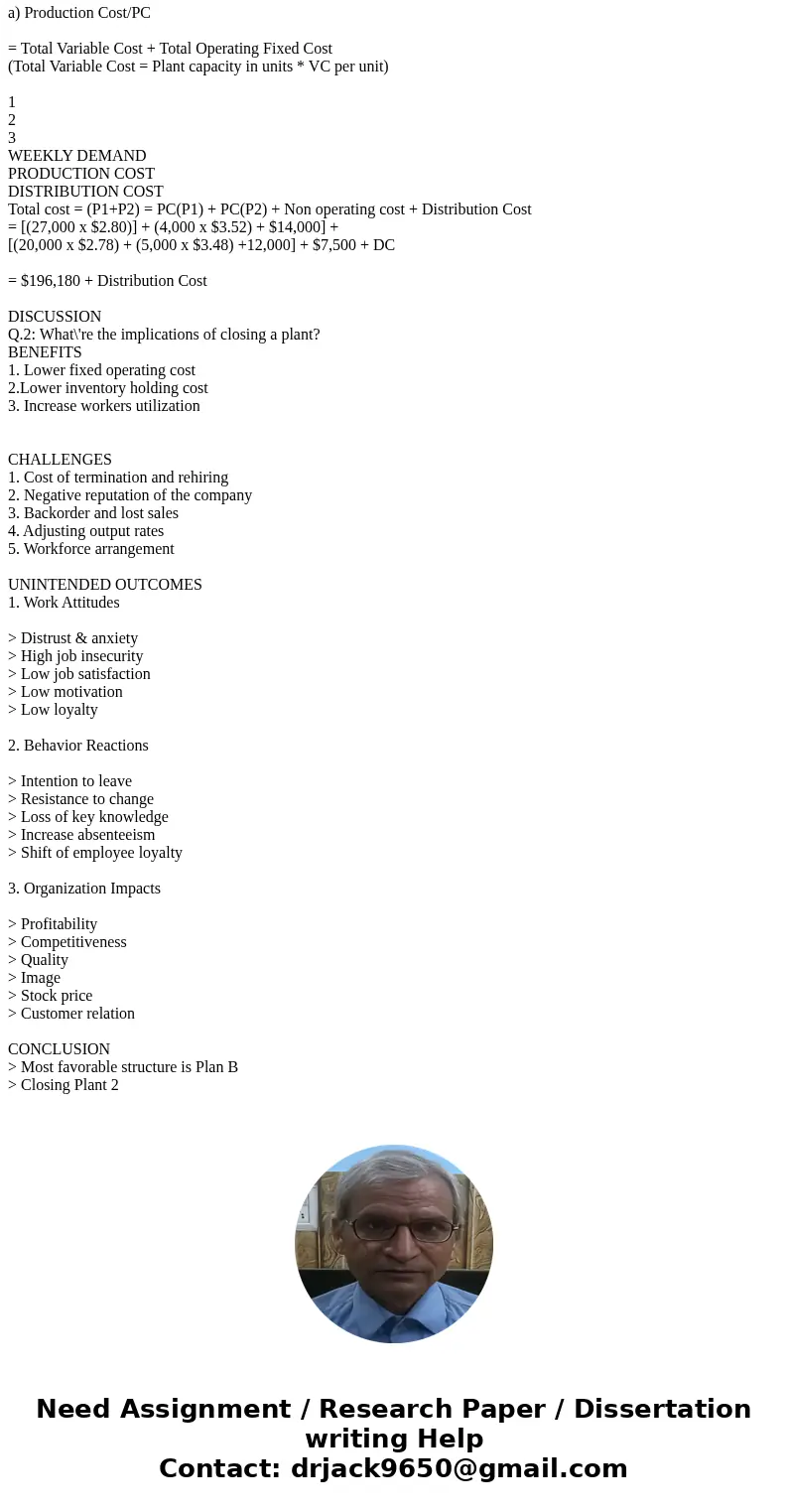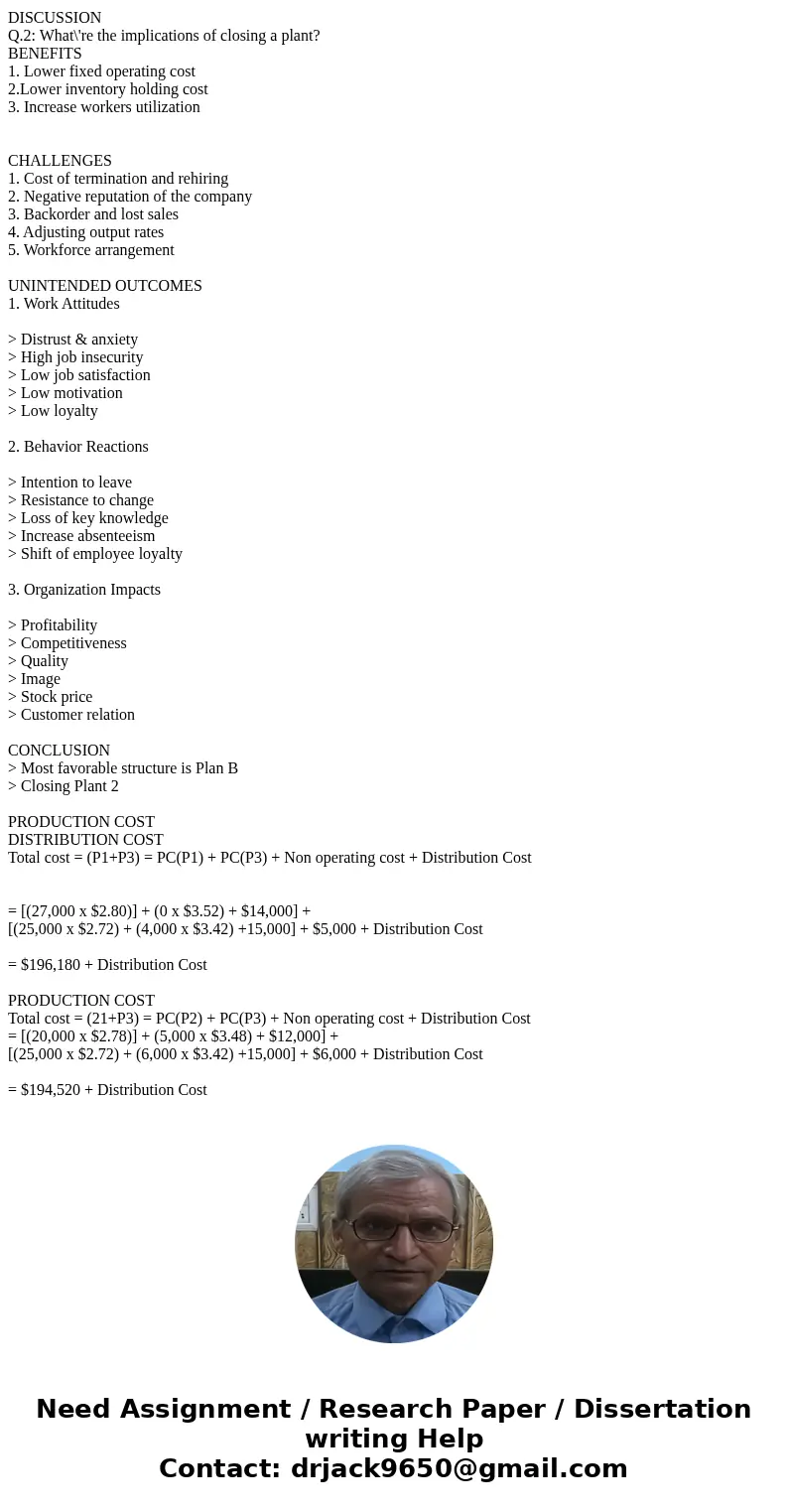andrewcarter inc case study solutionSolutionandrewcarter inc
andrew-carter inc case study solution
Solution
andrew-carter inc case study solution
PLAN A:
Plant 1 + Plant 2
Total cost = (P1+P2) = PC(P1) + PC(P2) + Non operating cost + Distribution
TOTAL COST COMPARISON
PLAN C:
PLANT 2 + PLANT 3
Total cost= PC(P1) + PC(P2) +
Non Operating Cost + Distribution Cost
PLAN B:
Plant 1 + Plant 3
Total cost= PC(P1) + PC(P2) +
Non Operating Cost + Distribution Cost
CASE STUDY #2
Andrew Carter, Inc.
Actual demand = 56,000
Units produced = 59,000
Excess units = 3,000
Plant 1, on OT highest variable cost = 7,000 – 3,000 = 4,000
ACTUAL DEMAND 56,000
UNITS PRODUCED 65,000
EXCESS DEMAND 9000
PLANT 1 OT =9000-7000=2000
PLANT 3 OT =6000-2000=4000
Actual demand = 56,000
Units produced = 56,000
TRANSPORTATION MODEL
ERENETA
GONZALES
QUITILEN
VITANGCOL
INTRODUCTION
Major Canadian producer and distributor of outdoor lighting fixtures
operates
three manufacturing plants
five distribution warehouses.
CLOSE 1
PLANT
= EXCESS CAPACITY OF 34,000 UNITS/WK
ANDREW CARTER, INC.
Q. 1: Evaluate the various configurations of operating and closed plants that will meet weekly demand. Determine which configuration minimizes total costs.
DISCUSSION
3 CONFIGURATIONS
FORMULAS
b) Total Cost
Plan A (P1+P2) = PC(P1) + PC(P2) + Non operating cost + Distribution cost
Plan B (P1+P3) = PC(P1) + PC(P3) + Non operating cost + Distribution cost
Plan C (P2+P3) = PC(P2) + PC(P3) + Non operating cost + Distribution cost
a) Production Cost/PC
= Total Variable Cost + Total Operating Fixed Cost
(Total Variable Cost = Plant capacity in units * VC per unit)
1
2
3
WEEKLY DEMAND
PRODUCTION COST
DISTRIBUTION COST
Total cost = (P1+P2) = PC(P1) + PC(P2) + Non operating cost + Distribution Cost
= [(27,000 x $2.80)] + (4,000 x $3.52) + $14,000] +
[(20,000 x $2.78) + (5,000 x $3.48) +12,000] + $7,500 + DC
= $196,180 + Distribution Cost
DISCUSSION
Q.2: What\'re the implications of closing a plant?
BENEFITS
1. Lower fixed operating cost
2.Lower inventory holding cost
3. Increase workers utilization
CHALLENGES
1. Cost of termination and rehiring
2. Negative reputation of the company
3. Backorder and lost sales
4. Adjusting output rates
5. Workforce arrangement
UNINTENDED OUTCOMES
1. Work Attitudes
> Distrust & anxiety
> High job insecurity
> Low job satisfaction
> Low motivation
> Low loyalty
2. Behavior Reactions
> Intention to leave
> Resistance to change
> Loss of key knowledge
> Increase absenteeism
> Shift of employee loyalty
3. Organization Impacts
> Profitability
> Competitiveness
> Quality
> Image
> Stock price
> Customer relation
CONCLUSION
> Most favorable structure is Plan B
> Closing Plant 2
PRODUCTION COST
DISTRIBUTION COST
Total cost = (P1+P3) = PC(P1) + PC(P3) + Non operating cost + Distribution Cost
= [(27,000 x $2.80)] + (0 x $3.52) + $14,000] +
[(25,000 x $2.72) + (4,000 x $3.42) +15,000] + $5,000 + Distribution Cost
= $196,180 + Distribution Cost
PRODUCTION COST
Total cost = (21+P3) = PC(P2) + PC(P3) + Non operating cost + Distribution Cost
= [(20,000 x $2.78)] + (5,000 x $3.48) + $12,000] +
[(25,000 x $2.72) + (6,000 x $3.42) +15,000] + $6,000 + Distribution Cost
= $194,520 + Distribution Cost



 Homework Sourse
Homework Sourse